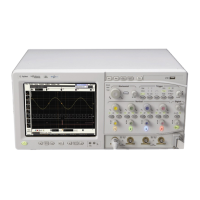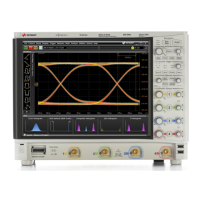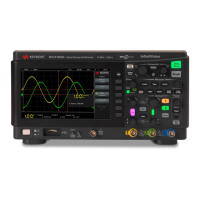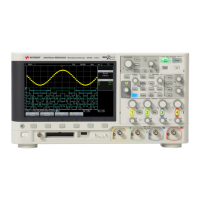Chapter 2: Preparing for Use
To connect the mouse, keyboard, LAN, printer, and GPIB cable
24
To connect the mouse, keyboard, LAN, printer, and GPIB cable
Mouse. Plug the mouse into the mouse connector on the back panel of the oscilloscope.
Keyboard. Plug the keyboard cable into the keyboard connector on the back panel of the
oscilloscope.
LAN Cable. Connect your LAN cable to the RJ-45 connector on the back panel of the oscilloscope.
Printer Cable. If you have a USB printer, you will need to connect its cable to one of the four USB
ports on the rear panel, or to the USB port on the front panel.
If you have a parallel printer, you will need to connect its parallel printer cable to the
Parallel Printer connector on the oscilloscope.
GPIB Cable. If you will be controlling the oscilloscope through the GPIB, attach your GPIB cable to
the GPIB connector on the rear of the oscilloscope.
Figure 2-4
Back Panel
Note: Your instrument’s rear panel configuration may differ from this diagram. Connect the cables based on your
instrument’s configuration.
While you can operate many oscilloscope functions using only the front-panel keys and
knobs, you will need the mouse to access advanced oscilloscope functions through the
graphical interface, or to find out more about the oscilloscope through the built-in
information system.
A keyboard must be plugged into the oscilloscope before the Windows operating system
has started booting.
Depending on your building’s LAN configuration, you may need to set up the oscilloscope’s
network configuration after connecting the LAN cable to the oscilloscope. If your
building’s network uses DHCP, many parameters will already be compatible. Before you
set up the network configuration, you should exit the oscilloscope application. If you do
not know how to setup the network, see your network administrator or use the Windows
XP on-line help.
Mouse
Keyboard
USB
Ports
GPIB
LAN
Parallel
Printer
Line In
Line Out
Microphone

